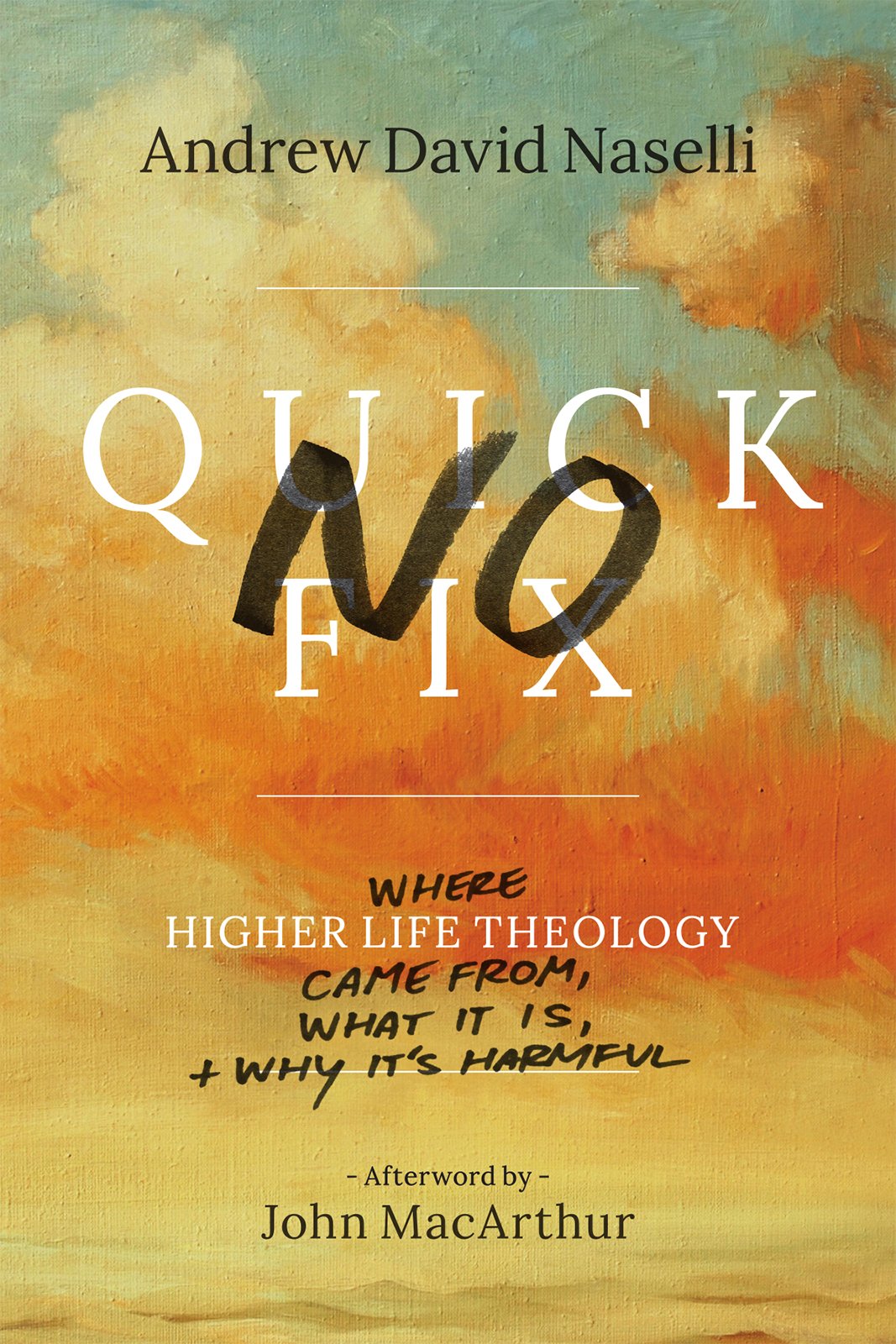A Brief Book Summary from Books At a Glance
by Kirsten Birkett
About the Author
Andrew David Naselli is Professor of Systematic Theology and New Testament for Bethlehem College and Seminary in Minneapolis and one of the pastors of The North Church.
Contents
Introduction
PART 1: Where Higher Life Theology Came From and What It Is
Chapter 1: What Is the Story of Higher Life Theology?
Chapter 2: What Is Higher Life Theology?
PART 2: Why Higher Life Theology Is Harmful
Chapter 3: The Fundamental Reason Higher Life Theology Is Harmful
Chapter 4: Nine More Reasons Higher Life Theology Is Harmful
Conclusion
Afterword by John MacArthur
Appendix: A More Excellent Way: Recommended Resources on the Christian Life
General Summary
A summarized and simplified version of the author’s book Let God and Let God?, this book analyzes Keswick (or higher life) theology and points out its failings.
Introduction
Higher life theology has harmed many people. Many Christians have believed that becoming a Christian has two steps: first be ‘saved,’ then ‘get serious’ (i.e., live a ‘higher … victorious … spiritual’ life); have Jesus as Master as well as Saviour. The second step comes when you “let go and let God.’ But it’s unbiblical, and it doesn’t work.
PART 1: Where Higher Life Theology Came From and What It Is
Chapter 1: What Is the Story of Higher Life Theology?
There are (at least) five major evangelical views on the Christian life/sanctification: Wesleyan Perfectionism, Pentecostal, Chaferian, Higher Life or Keswick, and Reformed. This is how the first four came about.
John Wesley separated becoming a Christian from the beginning of sanctification. He defined sin as “voluntary transgression of a known law” so it is possible to reach what he called “Christian perfection” or “perfectly loving God with your whole being” – a second blessing, entire sanctification. John Fletcher and Adam Clarke used Pentecostal language of baptism with the Spirit to take this further.
Wesleyan Perfectionism blended with American revivalism led to the holiness movement (late 1830s), with two parts:
- Methodist perfectionism. Pheobe Palmer’s altar theology promised a shorter way to holiness, as you surrender yourself on the altar, which is Christ, who sanctifies the offering.
- Oberlin perfectionism. Similar to Wesleyan, but views sanctification as “entirely consecrating a person’s autonomous free will to obey the moral law”. Charles Finney and Asah Mahan (both presidents of Oberlin College). It begins with Spirit-baptism, experienced after becoming a Christian. Finney was Pelagian.
Higher life theology began in 1858 with William E Boardman, who separated justification from sanctification, calling Spirit-baptism the second conversion (a “crisis experience”). Taken up and spread by Robert Pearsall Smith and his wife Hannah Whitall Smith. Requires entire surrender (“let go”) and absolute faith (“let God”), which only some Christians can do; others remain “carnal Christians.” Both Robert and Hannah later became apostate.
T. D. Harford-Battersby took on the theology, and with Robert Wisdom began the Keswick Convention in 1875 (the Convention still continues annually, but now with more Reformed theology). Other figures who taught at Kewsick, and followed higher life theology: J. Elder Cumming; Evan H. Hopkins; H. W. Webb-Peploel; H. C. G. Moule; F. B. Meyer; Charles A. Fox; Andrew Murray; missionaries J Hudson Taylor and Amy Carmichael; hymnist Frances Ridley Havergal; A. T. Pierson; leaders of the victorious life movement W. H. Griffith Thomas, Charles G. Trumbull, and Robert C. McQuilkin.
Higher Life Theology spawned four influential American institutions:
- The Christian and Missionary Alliance (founded by A. B. Simpson), preached baptism with Holy Spirit at a time after conversion, but not speaking in tongues as evidence of crisis.
- Moody Bible Institute (D. L. Moody, R. A. Torrey, James M. Gray) 1889. Gray, unlike the other two, did not view Spirit-baptism as a separate experience after conversion.
- Pentecostalism (A. B. Simpson, D. L Moody, R. A. Torrey), 1900 – the third view of sanctification. Speaking in tongues is seen as evidence of spirit-baptism.
- Dallas Theological Seminary and the Chaferian view of sanctification (Lewis Sperry Chafer, John F. Walvoord, later Charles C. Ryrie), founded 1924, slightly different from higher life theology. Chafer was the protégé of C. I. Scofield, who embraced higher life theology, and divided believers into the Spirit-filled and non-Spirit-filled, carnal Christians (who are powerless). Ryrie thought all believers are baptised in the spirit, but only some are filled and so experience power.
The “Lordship salvation” controversy of 1919 was between Chafer and B. B. Warfield (Reformed) and was repeated in the 1950s between Steven Barabas and John Murray, and again in the 1980s-90s between Ryrie and John MacArthur. The Chaferian view that one can be saved without having Jesus as Lord was opposed to the Reformed view that one must repent to be saved, and good works/continuing belief are necessary fruit of saving faith. . . .
[To continue reading this summary, please see below....]The remainder of this article is premium content. Become a member to continue reading.
Already have an account? Sign In
